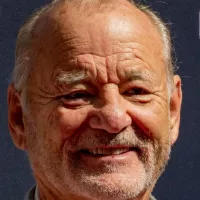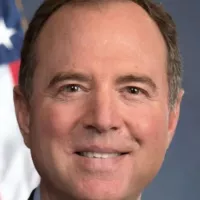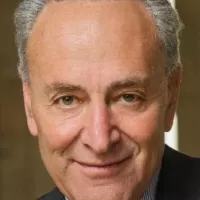Merrill Lynch & Co. was a prominent American investment bank founded in 1914. It operated independently until its acquisition by Bank of America in January 2009. Following the acquisition, Merrill Lynch was integrated into BofA Securities, ceasing to exist as a separate entity. The company played a significant role in the financial industry for nearly a century.
January 6, 1914: Charles E. Merrill & Co. Founded
On January 6, 1914, Charles E. Merrill opened Charles E. Merrill & Co. at 7 Wall Street in New York City, marking the beginning of the firm.
1914: Founding of Charles E. Merrill & Co.
In 1914, Charles E. Merrill established Charles E. Merrill & Co. marking the beginning of the company that would eventually become Merrill Lynch.
1915: Name Change to Merrill, Lynch & Co.
In 1915, Edmund C. Lynch joined Charles E. Merrill and the firm's name was officially changed to Merrill, Lynch & Co.
1916: Winthrop H. Smith Joins the Firm
In 1916, Winthrop H. Smith became part of Merrill Lynch & Co.
1921: Purchase of Pathé Exchange
In 1921, Merrill Lynch purchased Pathé Exchange, which would later become RKO Pictures.
1926: Acquisition of Controlling Interest in Safeway Inc.
In 1926, Merrill Lynch acquired a controlling interest in Safeway Inc., a small grocery store, and transformed it into the country's third largest grocery store chain by the early 1930s.
1930: Restructuring and spin-off of Retail Brokerage Business
In 1930, Merrill Lynch restructured the company by spinning off its retail brokerage business to E. A. Pierce & Co., to focus on investment banking.
1938: E.A. Pierce controls the largest wire network
By 1938, E.A. Pierce controlled the largest wire network, featuring a private network of over 23,000 miles of telegraph wires, typically used for orders.
1938: Discussions about Merger after Lynch's Death
Following the death of Lynch in 1938, Smith began discussions with Merrill about a possible merger of E.A. Pierce, due to its financial struggles, and Merrill Lynch.
1938: Comma Dropped From Firm Name
In 1938, the comma was dropped from the firm's name, which then became Merrill Lynch & Co.
April 1, 1940: Merger with E. A. Pierce & Co. and Cassatt & Co.
On April 1, 1940, Merrill Lynch merged with E. A. Pierce & Co. and Cassatt & Co., resulting in the new firm being briefly known as Merrill Lynch, E. A. Pierce, and Cassatt.
1940: Winthrop H. Smith takes over the company
Winthrop H. Smith had been running the company since 1940.
1941: First Annual Fiscal Report
In 1941, Merrill Lynch became the first company on Wall Street to publish an annual fiscal report.
1941: Merger with Fenner & Beane
In 1941, Merrill Lynch, E. A. Pierce and Cassatt merged with Fenner & Beane, a New Orleans-based investment bank and commodities company, to become Merrill Lynch, Pierce, Fenner & Beane.
1952: Formation of Merrill Lynch & Co. as a Holding Company
In 1952, Merrill Lynch formed Merrill Lynch & Co. as a holding company and officially incorporated after being a partnership for nearly half a century.
December 31, 1957: New York Times Article
On December 31, 1957, The New York Times commented on the upcoming name change of Merrill Lynch, Pierce, Fenner & Beane to Merrill Lynch, Pierce, Fenner & Smith.
March 1, 1958: Name Change to Merrill Lynch, Pierce, Fenner & Smith
On March 1, 1958, the firm's name officially became "Merrill Lynch, Pierce, Fenner & Smith" and the company became a member of the New York Stock Exchange.
May 1963: Death of Christopher J. Devine
In May 1963, Christopher J. Devine died, which led to the merger with C.J. Devine & Co.
1964: Acquisition of C. J. Devine & Co.
In 1964, Merrill Lynch acquired C. J. Devine & Co., establishing a stronger presence in the government securities market.
1970: "Catholic" firm of Wall Street
Until as late as 1970, Merrill Lynch was known as the "Catholic" firm of Wall Street.
1971: Goes Public
In 1971, Merrill Lynch went public and became a multinational corporation.
1977: Introduction of Cash Management Account (CMA)
In 1977, Merrill Lynch introduced its Cash Management Account (CMA), which enabled customers to sweep their cash into a money market mutual fund and included check-writing capabilities and a credit card.
1978: Acquisition of White Weld & Co.
In 1978, Merrill Lynch significantly strengthened its securities underwriting business by acquiring White Weld & Co.
1990: Sale of Canadian Retail Investment Business
In 1990, Merrill Lynch sold its Canadian retail investment business to CIBC Wood Gundy.
December 1994: Orange County Bankruptcy Filing
In December 1994, Orange County, California, filed for bankruptcy after losing $1.69 billion.
June 1998: Re-entry into Canadian Investment Business
In June 1998, Merrill Lynch re-entered the Canadian investment business with the purchase of Midland Walwyn Inc.
June 1998: Settlement with Orange County
In June 1998, Merrill Lynch settled with Orange County, California, for $400 million over accusations of selling inappropriate and risky investments.
1999: Enron and Merrill Lynch Nigerian Barge Transaction
In 1999, an Enron entity's sale of an interest in Nigerian energy barges to Merrill Lynch was alleged to be a sham that allowed Enron to illegally book about $12 million in pretax profit.
December 2001: Sale of Midland Walwyn to CIBC Wood Gundy
In December 2001, Merrill Lynch sold Midland Walwyn to CIBC Wood Gundy.
2002: Merrill Lynch Fined for Improper Activities in Fort Lee Office
In 2002, Merrill Lynch settled for a $10 million civil penalty due to improper activities in the firm's Fort Lee New Jersey office. Financial advisors placed 12,457 trades for Millennium Partners in mutual funds, siphoning short-term profits out of mutual funds and harmed long-term investors. Merrill Lynch failed to reasonably supervise these advisors.
2002: Merrill Lynch Settles Misleading Research Charges
In 2002, Merrill Lynch settled for a $100 million fine for publishing misleading research. As part of the agreement, Merrill Lynch agreed to increase research disclosure and decouple research from investment banking.
2003: Henry Blodget Charged with Civil Securities Fraud
In 2003, Henry Blodget, a well known analyst at Merrill Lynch, was charged with civil securities fraud by the U.S. Securities and Exchange Commission for giving conflicting stock assessments in company e-mails compared to what was publicly published by Merrill. He settled, was barred from the securities industry for life, and paid a $2 million fine and $2 million disgorgement.
2003: Shareholder of TMS Entertainment
In 2003, Merrill Lynch became the second-largest shareholder of the Japanese animation studio TMS Entertainment.
2003: CDO Market Rise
In 2003, Merrill Lynch's rise to leadership in the CDO market began when Christopher Ricciardi brought his CDO team from Credit Suisse First Boston to Merrill Lynch.
2004: Convictions of Merrill Executives in Enron Investigation
In 2004, convictions of Merrill Lynch executives marked the only instance in the Enron investigation where the government criminally charged officials from banks and securities firms. The case revolved around a 1999 transaction involving Merrill, Enron, and the sale of electricity-producing barges off the coast of Nigeria.
2004: Number 1 Underwriter of CDOs
Merrill Lynch's Global Markets and Investing Group was the No. 1 global underwriter of CDOs in 2004.
2005: Promotion of CDO Underwriting
In 2005, Merrill Lynch advertised its position as the No. 1 global underwriter of CDOs in 2004.
December 2006: Purchase of First Franklin Financial Corp.
In December 2006, Merrill Lynch purchased First Franklin Financial Corp., to provide mortgages for CDOs.
June 26, 2007: EEOC Sues Merrill Lynch for Discrimination
On June 26, 2007, the U.S. Equal Employment Opportunity Commission (EEOC) filed a lawsuit against Merrill Lynch, alleging discrimination against Dr. Majid Borumand because of his Iranian nationality and Islamic religion.
July 2007: Start of losses
Between July 2007 and July 2008, Merrill Lynch lost $19.2 billion, or $52 million daily.
July 20, 2007: Merrill Lynch Ordered to Pay Damages to Iranian Employee
On July 20, 2007, a NASD arbitration panel ordered Merrill Lynch to pay $1.6 million to its former Iranian employee, Fariborz Zojaji, for firing him due to his Persian ethnicity.
September 2007: Merrill Lynch's Share Price Peak
In September 2007, Merrill Lynch's share price reached a high point, but by September 14, 2008 it had declined, leading to its sale to Bank of America.
November 2007: Write-down and CEO Removal
In November 2007, Merrill Lynch announced an $8.4 billion write-down due to the subprime mortgage crisis, and E. Stanley O'Neal was removed as CEO.
December 2007: New CEO Appointed
In December 2007, John Thain was appointed as the new CEO of Merrill Lynch and made changes in the top management. Also, the firm announced it would sell its commercial finance business to General Electric, and would sell off major shares of its own stock to Temasek Holdings.
2007: Collapse of CDO Value
By the end of 2007, the value of Merrill Lynch's CDOs was collapsing, leading to billions of dollars in losses.
2007: Merrill Lynch Ranked Second-Best Company for People with Disabilities
In 2007, Merrill Lynch was named the second-best company in the US for people with disabilities by Diversity Magazine.
2007: Start of the Financial Crisis
The Financial Crisis of 2007-2008 occurred, impacting the company's decision to be acquired in September 2008.
May 2008: Merrill Lynch Named Top Company for Diverse College Graduates
In May 2008, Merrill Lynch was named the No.1 US company for "Diverse College Graduates" by Diversity Edge magazine.
June 5, 2008: Merrill Lynch Creates WAMENA Professional Network
As of June 5, 2008, Merrill Lynch created the West Asian, Middle Eastern and North African (WAMENA) Professional Network to support employees of diverse backgrounds.
June 2008: Merrill Lynch Ranked Among Top Companies for LGBT Employees
In its June 2008 issue, Diversity Inc. named Merrill Lynch one of the top 10 companies for lesbian, gay, bisexual, and transgender employees.
July 2008: Fourth Quarter Losses
In July 2008, John Thain announced $4.9 billion fourth quarter losses for the company due to defaults and bad investments in the ongoing mortgage crisis. Furthermore, Merrill Lynch lost $19.2 billion between July 2007 and July 2008.
August 13, 2008: New Jersey Appeals Court Rules Against Merrill Lynch in Discrimination Lawsuit
On August 13, 2008, a New Jersey appeals court rendered a ruling against Merrill Lynch in a discrimination lawsuit filed by a gay employee.
August 2008: Threat of Lawsuit
In August 2008, Andrew Cuomo, New York Attorney General, threatened to sue Merrill Lynch over its misrepresentation of the risk on mortgage-backed securities.
August 22, 2008: Agreement to Buy Back Auction-Rate Securities
On August 22, 2008, CEO John Thain announced an agreement to buy back all auction-rate securities from customers with less than $100 million in deposits with the firm, beginning in October 2008 and expanding in January 2009.
September 5, 2008: Goldman Sachs Downgrade
On September 5, 2008, Goldman Sachs downgraded Merrill Lynch's stock to "conviction sell" and warned of further losses at the company.
September 8, 2008: Lehman Brothers' Liquidity Crisis
During the week of September 8, 2008, Lehman Brothers faced severe liquidity pressures, raising concerns about its survival and potentially triggering contagion across other investment banks.
September 14, 2008: Agreement to be acquired by Bank of America
On September 14, 2008, at the height of the Financial crisis of 2007–2008, Merrill Lynch agreed to be acquired by Bank of America.
September 2008: Losses on Mortgage-Backed Securities
Bloomberg reported in September 2008 that Merrill Lynch had lost $51.8 billion on mortgage-backed securities as part of the subprime mortgage crisis.
October 2008: Buy Back of Auction-Rate Securities
In October 2008, Merrill Lynch began the buy back all auction-rate securities from customers with less than $100 million in deposits with the firm.
2008: Federal Pressure on Bank of America for Merrill Lynch Merger
In 2008, Congressional testimony and internal emails revealed that the merger between Bank of America and Merrill Lynch was transacted under pressure from federal officials, who threatened to replace Bank of America's management if they did not proceed with the merger.
2008: Merrill Lynch Paid Billions in Bonuses Despite Losses
In 2008, Merrill Lynch arranged for payment of billions in bonuses despite reported losses of $27 billion. These bonuses totalled $3.6 billion, which was one-third of the money they received from the feds' TARP bailout.
2008: Sale of CDOs to Lone Star Funds
In mid-2008, Merrill Lynch sold a group of CDOs, that had once been valued at $30.6 billion, to Lone Star Funds for $1.7 billion in cash and a $5.1 billion loan.
January 2009: Acquisition by Bank of America
In January 2009, Merrill Lynch & Co. was acquired by Bank of America and subsequently integrated into BofA Securities, marking the end of its independent existence.
January 2009: Expansion of Buy Back of Auction-Rate Securities
In January 2009, Merrill Lynch expanded the buy back all auction-rate securities from customers with less than $100 million in deposits with the firm.
January 2009: Acquisition Completion
In January 2009, the acquisition of Merrill Lynch by Bank of America was finalized.
March 2009: Merrill Lynch Received Bailout Funds via AIG
In March 2009, reports surfaced that in 2008 Merrill Lynch had received billions of dollars from insurance arrangements with AIG, including $6.8 billion from funds provided by United States taxpayers as part of the AIG bailout.
April 2009: MBIA Lawsuit
In April 2009, bond insurance company MBIA sued Merrill Lynch for fraud and other violations related to credit default swaps on mortgage-based collateralized debt obligations.
2009: Rabobank Sues Merrill Lynch Over Norma CDO
In 2009, Rabobank sued Merrill Lynch over a CDO named Norma, alleging that Merrill did not disclose that Magnetar Capital had chosen assets to go into Norma and bet against them. Rabobank claimed the case was similar to the SEC's fraud charges against Goldman Sachs and its Abacaus CDOs, but Merrill disputed Rabobank's arguments.
2010: Dismissal of Charges
In 2010, Justice Bernard Fried disallowed all but one of the charges in the MBIA lawsuit against Merrill Lynch.
October 2013: Merger into Bank of America Corporation
In October 2013, Merrill Lynch & Co., Inc. was officially merged into Bank of America Corporation.
Mentioned in this timeline

Bank of America is a multinational investment bank and financial...
Nigeria is a West African nation the most populous in...
The United States of America is a federal republic located...
California is a U S state on the Pacific Coast...

Books are a means of storing information as text or...

New Orleans is the most populous city in Louisiana and...
Trending

2 months ago Celebrating Chris Hemsworth's Birthday: Iconic Roles from Thor to Extraction and Beyond

5 months ago Bill Murray faces cease and desist, appears with Fox, honored as comedy great.
Aziz Ansari is an American actor comedian and filmmaker known for his role as Tom Haverford on Parks and Recreation...

3 months ago Alycia Parks vs. Mai Hontama: WTA Prague Open 2025 Prediction and Odds

5 months ago Ballerina's final trailer showcases fighting, fire, and Keanu Reeves' John Wick.
1 hour ago Hailey Baptiste Faces Leylah Fernandez at the 2025 Kinoshita Group Japan Open.
Popular

Candace Owens is an American political commentator and author known...

Charlie Kirk is an American right-wing political activist entrepreneur and...

Greta Thunberg is a Swedish climate activist who gained international...

Kashyap Pramod Patel is an American lawyer and former federal...

Adam Schiff is an American politician and lawyer currently serving...

Chuck Schumer is the senior United States Senator from New...